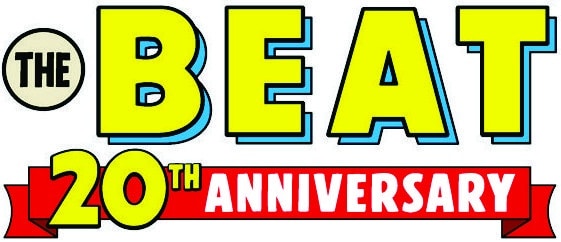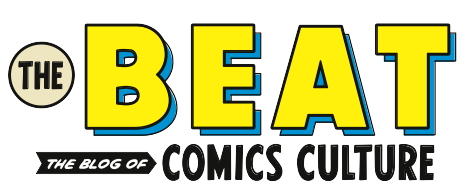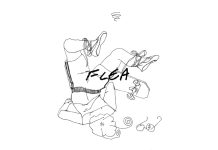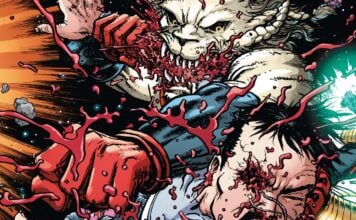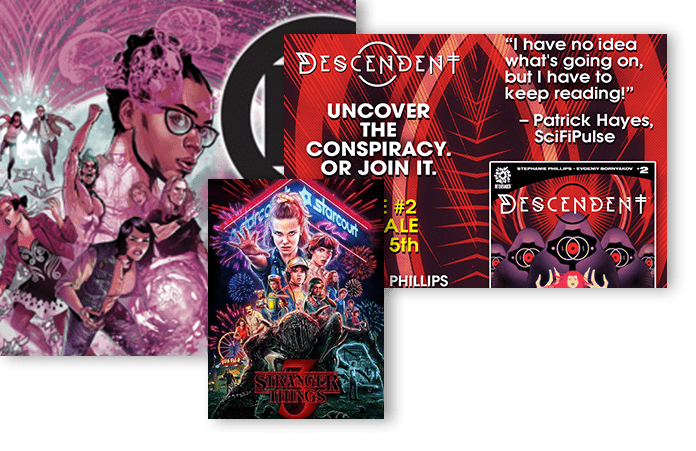Ambiguous Blu
Cartoonist: Noah Schiatti
Publisher: Fieldmouse Press
Publication Date: May 13, 2025
Noah Schiatti‘s 52-page Ambiguous Blu is about Blu, a genderqueer teen who struggles with disordered eating behaviors.
Eating disorders, or EDs, are marked by persistent eating habit disruptions that harm physical and mental health. EDs are the most deadly mental health disorders, primarily because of the physical health complications of malnutrition/dehydration (e.g., heart issues, endocrine disorders, gastrointestinal diseases, and refeeding/underfeeding syndromes). Although every ED is unique, the media often paints “a narrow, simplistic, sensationalized portrait” of those who struggle with them, per a Journal of Eating Disorders article on how EDs are portrayed in media, typically inaccurately depicting disordered eating as mainly affecting skinny, white, affluent, heterosexual cis-women under 30. This is known as the SWAG (skinny, white, affluent girl) stereotype.
“The SWAG stereotype can be linked back to early works on anorexia when many psychologists defined it as, ‘a disease of affluence’ that only affected ‘girls who have been raised in privileged, even luxurious circumstances,’” according to Project HEAL, a non-profit increasing access to life-saving treatment for EDs (treatment, which is not often covered by insurance). Thus, its use in media can led to negative attitudes towards individuals with EDs, as it reinforces the notion that these deadly illnesses are merely “issues of affluence, greed, or ungratefulness.”
Except, the SWAG stereotype of individuals with EDs fails to accurately represent the diverse populations who are affected. For example, while only 10.61% of characters with EDs are men, the rates are actually much higher in this population, with about one third of people in the U.S. with EDs being men (with some experts arguing that these numbers are likely higher, as men often don’t identify disordered eating as a problem). Likewise, the queer community is extremly underrepresented in media about EDs, with less than 5% of characters with EDs identifying as LGBTQ+ (and none identifying as trans), despite research that shows a higher incidence of EDs and disordered eating among LGBTQ+ adults and adolescents compared to heterosexual and cisgender counterparts.
Misrepresentation of these illnesses in media limits the audience’s understanding of them and fuels existing stigmas, and for those who don’t fit into the SWAG mold, this can make the road to diagnosis harder because it may inhibit them from seeking and receiving treatment. Indeed, scholars argue that media portrayals of mental illness can influence viewers’ attitudes and behaviors — including the attitudes and behaviors of medical professionals — often reiterating existing stereotypes that may then be used to frame views and understand people.
“Stereotypes about who develops EDs could contribute to disparities in ED treatment and outcomes,” found a 2018 study on identifying these disorders in different populations. “As such, higher-weight individuals, racial/ethnic minorities, those from socioeconomically disadvantaged backgrounds, and males may not recognize their need for treatment, may not be properly screened for EDs, and/or may not be referred to treatment.”
Although the media’s depictions of EDs have evolved slightly over the years (think Heartstopper), these portrayals still don’t accurately reflect the empirical evidence of who actually develops them. And that’s where Ambiguous Blu thrives; it’s one of the rare portrayals of a genderqueer person struggling with disordered eating (in fact, from what I can find online, Blu may be the ONLY genderqueer character with an ED in mass media).
As a journalist and critic who recently finished ED treatment (for the third time) in March 2025, I am well aware that it’s challenging to tell compelling eating disorder stories while still being sensitive to the impact of these stories on those who struggle. However, Schiatti strikes that balance perfectly, telling a realistic story of disordered eating while also remaining sensitive to any potential impact on its readers—both for medical professionals, who may use Ambiguous Blu to learn about EDs and develop compassion for their patients who struggle with them; and for the patients themselves, who may find solace in a story letting them know they are not alone. After all, disordered eating thrives in secrecy.
While Blu’s ED behaviors happen in secret, it’s a prominent part of the comic’s visual narrative. Looking closely at Blu’s room, you quickly notice the empty food containers and wrappers, each carefully laid to rest under the chaotic remnants of their life, depicted as symbolic piles of clutter. Although being unable to perform activities of daily living (e.g., eating regularly, cleaning your room, taking care of personal hygiene, etc.) is common to many mental health struggles, here, Blu’s messy, unkept room is representative of Blu’s disordered eating habits—a fact that Schiatti confirms later, in panels depicting Blu on the toilet, secretly eating pomegranates.

Secretive eating, which the National Institutes of Health defines as “eating furtively and concealing the act and evidence of eating” (e.g., eating on the toilet, or hiding food wrappers where others cannot find the evidence of meeting your body’s needs), is common in youth populations like Blu. Indeed, clinicians and researchers consider it to be a behavioral indicator of a perceived inability to control how much is eaten, regardless of how much is actually eaten, which is a core symptom of several EDs.
Secretiveness and shame are conceptually related, according to Carl Jung. For individuals, like Blu, they may view giving in to their body’s need for nourishment as a personal (possibly even moral) failing, so they eat in secret because they feel shame when they eat.
When someone struggles with an ED, they often feel ashamed of their body’s evolutionary needs, as meeting those needs may be viewed as a sign of weakness. In other words, although humans are designed for survival, the ED brain can overwhelm those evolutionary functions—largely thanks to shame. Also, because we live in a merit-based culture, people may feel ashamed of attempts to allot the necessary time to respond to those needs (e.g., my ED won’t even let me drunk a cup of water because, eventually, that means I will need a bathroom break, and there’s no $$$ attached to sitting on the pot).
However, our bodies are designed to keep us alive, creating tension between the body’s needs and the eating disorder’s desire to ignore those very needs. This tension between the mind’s desires and the body’s needs can keep someone with disordered eating locked in cycles of shame, as binge eating inevitably follows each attempt at calorie restriction.
Although the reader has been invited to witness Blu’s disordered eating, they seem to be hiding their behaviors from their friends and family. And they seem to be doing it successfully. Blu’s disordered eating is never mentioned in dialogue, and at no point do those around them acknowledge that there may be a problem. Instead, it’s part of their dissociation, and how they respond to food stimuli in the middle of the narrative, that telegraphs how the rest of the book will play out. For example, at one point, the reader sees Blu engaging in an eating disorder behavior know as the “chew and spit.” And, at another point, we see the word balloons scribbled over, like the “wah wah wah” teacher’s voice in Charlie Brown, a common description used in treatement spaces for how engaging in conversation feels when you’re not living an embodied experience thanks to the ED and trauma.

While the decision to not focus on the ED behaviors may be narratively driven, it also serves as a sensitivity measure to those reading the comic that may be struggling. In that vein, I only selectivey chose to name some of the disordered eating behaviors outlined in the comic to avoid people using this review as a self-triggering mechanism.
Emily T. Troscianko‘s 2018 study on literary reading and eating disorders found that for many who have them, fiction featuring a main character with an eating disorder had “negative effects on their mood, self-esteem, feelings about their bodies, and diet and exercise habits.”
“Some respondents also described deliberately seeking out particular books, knowing that they were likely to make their disorder worse,” continues Troscianko, highlighting the dangers of self-triggering (when someone uses books to exacerbate an eating disorder deliberately).
Because of the unique nature of Ambiguous Blu in the graphic medicine space, I feel like it could be an important resource as both a creative-bibliotherapeutic mechanism and as a resource to help others what its like to experience living with an ED. My hope is that works like this will reduce the stigma around individuals with ED, through presenting a more nuanced narrative of the experience that encourages readers to either approach loved ones who seem to be struggling (remember: EDs live in secrecy!) or to help themselves (remember: you are not alone!)

Ambiguous Blu offers a rare glimpse into the secret shame of somone struggling with disordered eating, and it is sure to be added to the list of essential comics about eating disorders.
Ambiguous Blu is now available.
Read more great reviews from The Beat!
